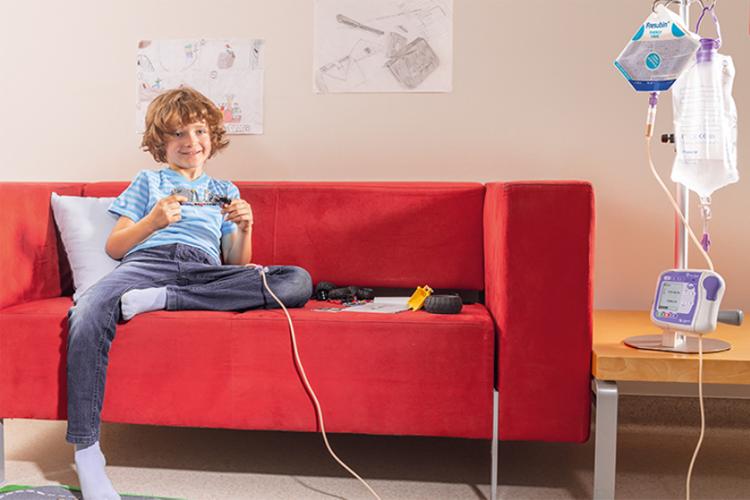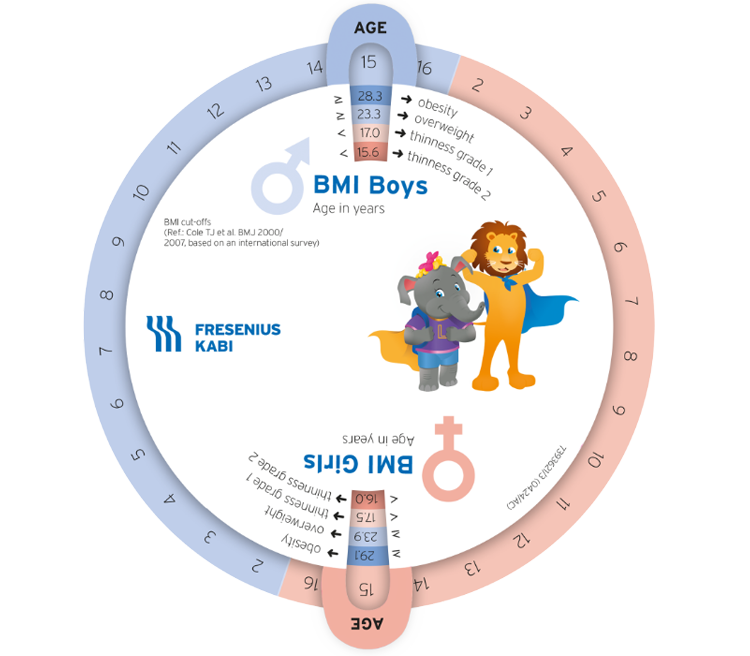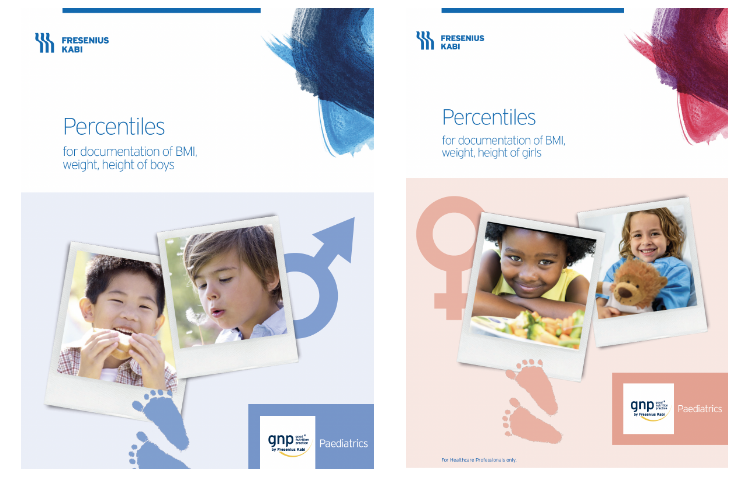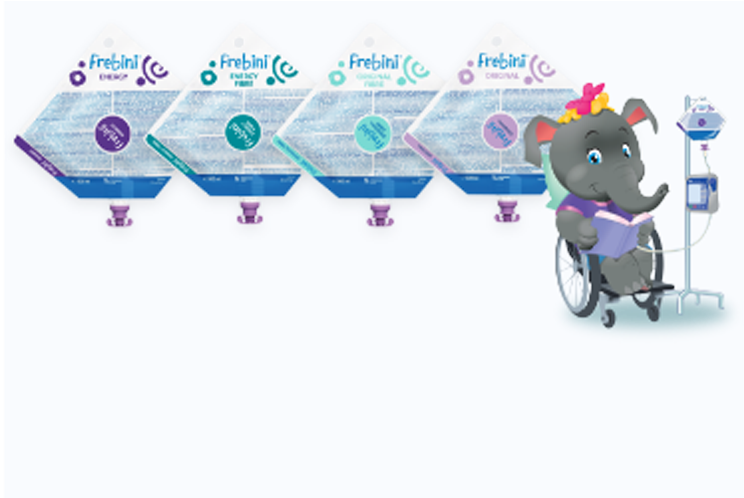Creating a positive change
Disease-related malnutrition in paediatric patients is highly prevalent, often overlooked and left untreated. Identifying the risk of malnutrition in children and supporting them with effective nutritional management is the key to improve their quality of life.1-3
Our good® nutrition practice (gnp) is specially designed to support you in the nutritional management of your patients.
A combination of timely screening, nutritional intervention, and regular monitoring is the key to preventing or reversing the effects of malnutrition.8-10 Prompt identification of faltering growth is a prerequisite for effective management. Therefore, it is imperative that infants and children suffering from this condition receive immediate nutritional evaluation and intervention.

Early malnutrition diagnosis1,11
Malnutrition negatively affects growth and cognitive development, leads to poor immune defense, increases the risk of infections, and impairs wound healing and postoperative complications, causing an increased risk of morbidity and mortality.12,13 Hospital stay is twice as long for malnourished children.8
Nutritional screening methods should follow child specific screening parameters:1,13-15
• BMI for age
• Length/height for age
• Weight for age
• Nutritional intake
• Weight loss
• Presence and severity of the disease
The purpose of screening for malnutrition is to identify children at risk early and have a full assessment, which may reverse the effects of malnutrition and its consequences.16
Body Mass Index (BMI)
A BMI check will quickly inform you about the ratio between your little patient’s height and weight. The BMI measurement indicated in green indicates that your patient’s body weight is appropriate for his/her/their age, gender, weight and height.
Together with the checklist, this information will serve as the basis for a medical consultation and to find out if your little patient’s intake meets his/her/their needs.
The right support
Children have high nutrient requirements due to their need for growth and development. Dietary management focuses on providing malnourished children with all nutrients. Optimal nutrition support means covering nutritional requirements at each step of the care pathway with the appropriate support. Oral nutritional supplements play an essential role in the nutritional management of children with disease-related malnutrition.
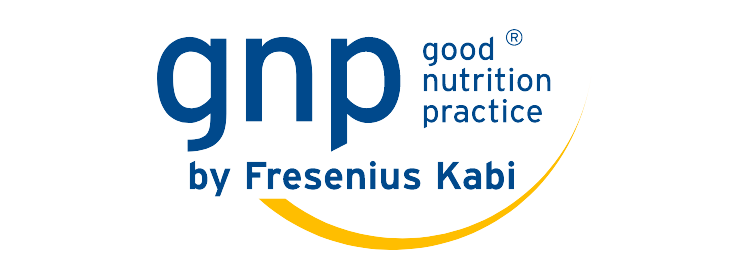
Choosing the appropriate form of nutrition support depends on:4
The age
Clinical condition
Gastrointestinal functioning: digestion and absorption
Degree of inadequate food intake

Enteral Nutrition plays an important role in the management of children with disease-related malnutrition.5
Designed to support your practice:
gnp programme for paediatrics
Our good® nutrition practice is specially developed to make the nutritional management of your little patients as easy as ABCs.

Paediatrics EN GNP Calculation Disk.pdf
Download personalised screening tools to detect the risk of malnutrition in paediatric patients.
- Filename
- Paediatrics EN GNP Calculation Disk.pdf
- Size
- 1 MB
- Format
Paediatrics EN GNP Percentiles.pdf
Download personalized percentile curves to detect the risk of malnutrition in paediatric patients
- Filename
- Paediatrics EN GNP Percentiles.pdf
- Size
- 8 MB
- Format
* Frebini® products are food for special medical purposes, that have to be used under medical supervision.
References:
1. Hulst JM, Zwart H, Hop WC, Joosten KF. Dutch national survey to test the STRONGkids nutritional risk screening tool in hospitalized children. Clin Nutr. 2010 Feb;29(1):106-11. doi: 10.1016/j.clnu.2009.07.006. Epub 2009 Aug 13. PMID: 19682776.
2. Mehta NM, Skillman HE, Irving SY, Coss-Bu JA, Vermilyea S, Farrington EA, McKeever L, Hall AM, Goday PS, Braunschweig C. Guidelines for the Provision and Assessment of Nutrition Support Therapy in the Pediatric Critically Ill Patient: Society of Critical Care Medicine and American Society for Parenteral and EnteralvNutrition. JPEN J Parenter Enteral Nutr. 2017 Jul;41(5):706-742. doi: 10.1177/0148607117711387. Epub 2017 Jun 2. PMID: 28686844.
3. Tume LN, Valla FV, Joosten K, Jotterand Chaparro C, Latten L, Marino LV, Macleod I, Moullet C, Pathan N, Rooze S, van Rosmalen J, Verbruggen SCAT. Nutritional support for children during critical illness: European Society of Pediatric and Neonatal Intensive Care (ESPNIC) metabolism, endocrine and nutrition section position statement and clinical recommendations. Intensive Care Med. 2020 Mar;46(3):411-425. doi: 10.1007/s00134-019-05922-5. Epub 2020 Feb 20. PMID: 32077997; PMCID: PMC7067708.
4. Braegger C, Decsi T, Dias JA, Hartman C, Kolacek S, Koletzko B, Koletzko S, Mihatsch W, Moreno L, Puntis J, Shamir R, Szajewska H, Turck D, van Goudoever J; ESPGHAN Committee on Nutrition:. Practical approach to paediatric enteral nutrition: a comment by the ESPGHAN committee on nutrition. J Pediatr Gastroenterol Nutr. 2010 Jul;51(1):110-22. doi: 10.1097/MPG.0b013e3181d336d2. PMID: 20453670.
5. Axelrod D. Pediatric enteral nutrition. JPEN. 2006;30:S21-SS26.
6. Gibbons T, Fuchs GJ. Malnutrition: a hidden problem in hospitalized children. Clin Pediatr (Phila). 2009;48(4):356-361.
7. Diamanti A, Cereda E, Capriati T, Giorgio D, Brusco C, Liguori A, et al. Prevalence and outcome of malnutrition in pediatric patients with chronic diseases: Focus on the settings of care. Clin Nutr. 2019;38(4):1877-82
8. Hartman C, Shamir R, Hecht C, Koletzko B. Malnutrition screening tools for hospitalized children. Current Opinion in Clinical Nutrition & Metabolic Care.2012;15(3):303-9.
9. European Society of Paediatric Gastroenterology Hepatology and Nutrition (ESPGHAN). Recommendations for Nutritional Management of Children with Neurological Impairment. 2019.
10. Baxter JA, Al-Madhaki FI, Zlotkin SH. Prevalence of malnutrition at the time of admission among patients admitted to a Canadian tertiary-care paediatric hospital. Paediatr Child Health. 2014 Oct;19(8):413-7. doi: 10.1093/pch/19.8.413. PMID: 25382997; PMCID: PMC4220524.
11. Black MM, Dubowitz H, Krishnakumar A, Starr RH Jr. Early intervention and recovery among children with failure to thrive: follow-up at age 8. Pediatrics. 2007 Jul;120(1):59-69. doi: 10.1542/peds.2006-1657. PMID: 17606562.
12. McCarthy A, Delvin E, Marcil V, Belanger V, Marchand V, Boctor D, Rashid M, Noble A, Davidson B, Groleau V, Spahis S, Roy C, Levy E. Prevalence of Malnutrition in Pediatric Hospitals in Developed and In-Transition Countries: The Impact of Hospital Practices. Nutrients. 2019 Jan 22;11(2):236. doi: 10.3390/nu11020236. PMID: 30678232; PMCID: PMC6412458.
13. McCarthy H, Dixon M, Crabtree I, Eaton-Evans MJ, McNulty H. The development and evaluation of the Screening Tool for the Assessment of Malnutrition in Paediatrics (STAMP©) for use by healthcare staff. J Hum Nutr Diet. 2012 Aug;25(4):311-8. doi: 10.1111/j.1365-277X.2012.01234.x. Epub 2012 May 9. PMID: 22568534.
14. Gerasimidis K, Keane O, Macleod I, Flynn DM, Wright CM. A four-stage evaluation of the Paediatric Yorkhill Malnutrition Score in a tertiary paediatric hospital and a district general hospital. Br J Nutr. 2010 Sep;104(5):751-6. doi:10.1017/S0007114510001121. Epub 2010 Apr 19. PMID: 20398432.
15. Secker DJ, Jeejeebhoy KN. Subjective global nutritional assessment for children. Am J Clin Nutr 2007; 85(4):1083-1089.
16. Huysentruyt K, Devreker T, Dejonckheere J, De Schepper J, Vandenplas Y, Cools F. Accuracy of Nutritional Screening Tools in Assessing the Risk of Undernutrition in Hospitalized Children. J Pediatr Gastroenterol Nutr. 2015 Aug;61(2):159-66. doi: 10.1097/MPG.0000000000000810. PMID: 25885879.
17. den Broeder E, Lippens RJ, van ’t Hof MA, Tolboom JJ, Sengers RC, van den Berg AM, van Houdt NB, Hofman Z, van Staveren WA. Nasogastric tube feeding in children with cancer: the effect of two different formulas on weight, body composition, and serum protein concentrations. JPEN J Parenter Enteral Nutr. 2000 Nov-Dec;24(6):351-60. doi: 10.1177/0148607100024006351. PMID: 11071595.
18. Zhang Z, Li F, Hannon BA, Hustead DS, Aw MM, Liu Z, Chuah KA, Low YL, Huynh DTT. Effect of Oral Nutritional Supplementation on Growth in Children with Undernutrition: A Systematic Review and Meta-Analysis. Nutrients. 2021 Aug 30;13(9):3036. doi: 10.3390/nu13093036. PMID: 34578914; PMCID: PMC8468927.
19. Cawood AL, Smith C, Kinnear FJ, Upton L, Trace S, O’Connor G, Stratton RJ. Effect of oral nutritional supplements on outcomes in children presenting with, or at risk of, faltering growth in clinical settings: A systematic review and meta-analysis. J Child Health Care. 2023 Jul 5:13674935231185181. doi: 10.1177/13674935231185181. Epub ahead of print. PMID: 37406354.
20. Bayram I, Erbey F, Celik N, Nelson JL, Tanyeli A. The use of a protein and energy dense eicosapentaenoic acid containing supplement for malignancy related weight loss in children. Pediatr Blood Cancer. 2009 May;52(5):571-4. doi: 10.1002/pbc.21852. PMID: 19090549.




